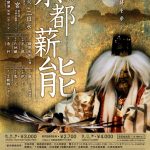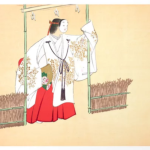This is the house of Kawai Kanjiro, a legendary potter and a key figure in the mingei or Japanese folk art movement. His beautiful wooden townhouse has been preserved as a memorial run by his family. The building itself and the garden are wonderful, but you can also see here many of his works: ceramics, sculptures, and woodcarvings. His kilns are preserved at the back of the … [Read more...] about Kawai Kanjiro’s House
Culture & Tradition
Kyoto Antiques: Shopping & Window Shopping
Ian Ropke writes, There are two areas in Kyoto known for antiques: Teramachi and Shinmonzen. Both areas are perfect for window shopping and, naturally, shopping. Teramachi, south of Marutamachi, north of Oike but mostly north of Nijo, is Kyoto’s newest antique center. It is more casual, and often quite a bit cheaper when it comes to antiques pure and simple … [Read more...] about Kyoto Antiques: Shopping & Window Shopping
Takigi Noh (Noh by Firelight)
John Dougill writes… For many people Noh is a turn-off. The plays have no conflict, no humour and no facial expression. Actors move at a snail’s pace, the language is arcane and the music archaic. To its detractors it’s simply an outmoded relic of medieval times. Noh way, Noh thank you. There are regular performances in Kyoto, and if you attend you’ll find a good number … [Read more...] about Takigi Noh (Noh by Firelight)
Japanese Noh Theatre
Performances for the Gods Ian Ropke writes... Japanese Noh theatre is one of the oldest dramatic forms in world. The early developments of Noh lie in the festive entertainment of various kinds (dance, simple plays) performed at temples and shrines in the 12th and 13th centuries. Noh drama for much of its history was favored by the samurai, priest and aristocratic … [Read more...] about Japanese Noh Theatre





